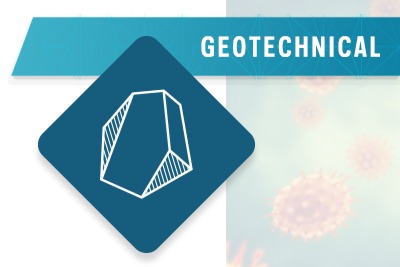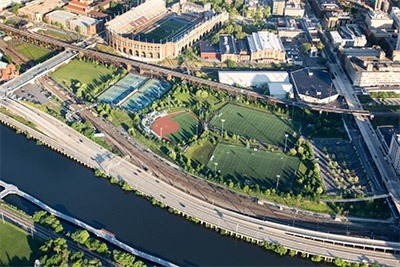Some of our clients have faced active construction site shutdowns. We are guiding them on geotechnical safety precautions in the event of a shutdown, including what are considered essential or non-essential activities. We are sharing some considerations that could protect your sites from longer-term issues and make restarting your operations easier.
What should I consider if I have a big hole in the ground (e.g., a large excavation)?
Consider evaluating the excavation’s stability as it relates to large global movements. Excavations in clay soils often “creep/move” if unattended for long time periods. This could affect the movement of the excavation support walls or bottom soil. Gradual movements over several weeks could compromise the safety of adjacent structures such as buildings, utilities, and sidewalks. To understand the movement, it’s advisable to monitor on-site instrumentation regularly (more on this below).
My site has an excavation below the water table. What could happen?
Stopping an active dewatering system could be detrimental to the soil subgrade and the excavation’s stability. To protect the subgrade, it is critical to maintain your dewatering system, or, alternatively, to evaluate the impact of stopping dewatering. Even if you are not actively dewatering, if your site is below the water table, the subgrades could become unstable over time resulting in costly repairs. It may be prudent to monitor the water levels during the shutdown to assess site impacts.
My foundations are being installed. How will a work stoppage impact them?
If a project is in the middle of slurry wall/load bearing elements (LBEs) installation, the element needs to be completed or backfilled. Otherwise, the excavation could collapse and damage other portions of the site and adjacent structures and result in costly rework when site work restarts. Installation methods often involve uncased holes for deep foundation elements such as minipiles or drilled shafts, and these holes should be completed or backfilled with soil or flowfill to avoid collapse, even if filled with slurry or other fluids. To minimize rework, backfill the holes with acceptable material that can be re-excavated in the future. In addition, deep foundations and subgrades for shallow elements such as footings and slabs should be protected from inclement weather as it is vital to preserve the integrity of the foundation bearing soils.
Do I leave my site instrumentation unmonitored?
This issue is important. Instrumentation is critical to understanding the site’s and surrounding structures’ stability and providing early warning signs of issues. On many projects, instrumentation is manually read to understand the system’s performance and the effect on surrounding structures such as buildings, utilities, and sidewalks. With a project shut down, it is perhaps more important than ever to continue to read some instruments at certain frequencies, depending on construction stage and instrument type.
I have a surcharge program currently going on. What is important if my site is shut down?
Timing is everything. A surcharge system’s performance and behavior are directly related to settlement over time. If you skip settlement readings, you may miss important system performance trends which could lead to a delay in being able to remove the surcharge or starting construction.
Bottom line is that if site construction is stopped, evaluating the potential effect on the site and surrounding structures can avoid unnecessary costs or safety concerns down the line. We are here to help, both with these geotechnical considerations for your sites, and for your business continuity issues.
Published: 4/13/2020
- Education, healthcare, and cultural institutions
- Government infrastructure
- Industrial and manufacturing
- Mining
- Real estate developers
- Construction
- Geotechnical engineering
Authors

Service Leader, Geotechnical Engineering

Corporate Health and Safety Manager



